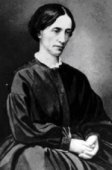
Preston Ewing
Born: Cairo, IL.
Pen Name: None Connection to Illinois: Ewing served as chairperson of the Land of Lincoln Legal Assistance Foundation and the Illinois Advisory Committee to the U. S. Commission on Civil Rights. His address is P. O. Box 481, Cairo, IL. 62914, 618-734-1725. Biography: Ewing moved to Los Angeles to attend college. His first employment was as Associate Director for the National Office of the NAACP. He later became an Associate Director of the National Center for the Educational Rights of Children. Mr. Ewing was active in the civil rights movement in Cairo, IL. His photographs from that period are in the form of a traveling exhibit and a book of photographs (Let My Children Go).
Awards:
- Delta Award from the Illinois State Historical Society.
Selected Titles
| Let my people go ISBN: 39015038577212 OCLC: Southern Illinois Univ Pr 1996-12 When a young black soldier at home on leave was found hanged in a Cairo, Illinois, police station in 1967, the black and white populations of this southern Illinois river city clashed violently, and the fury, once ignited, raged on for seven years. Jan Peterson Roddy has brought together the photographs of Preston Ewing Jr. with a wealth of collateral materials to document these turbulent years of racial strife. At the core of this book and providing its essential vitality are 110 black-and-white photographs by Ewing, who at the time this struggle began was the local NAACP president in Cairo. Excerpts from oral histories place Ewing’s images in context and fill in the details of the story. Interspersed news clippings, newspaper headlines, and public announcements and documents help re-create a sense of what it was like to live in Cairo at the time. Essays by Marva Nelson and Cherise Smith put the attitudes, events, and images of Cairo in a national context and examine photography’s privileged position in presenting and preserving history. The clash in Cairo serves as a microcosm of the national civil rights struggle in the late 1960s. Let My People Go provides the faces and voices of the movement. Sensational photographs of furious confrontation highlight some of these pages, but this pictorial and narrative account of Cairo’s story also shows that this was a multifaceted struggle involving, among other things, great persistence. The story of Cairo is compelling. It is unique even as it illustrates the common American theme of ordinary people grappling for justice. The perspective is that of a black community that lived through this struggle and wants its story told. It is a story told through an uncommon blend of documentation, human recollection, and analysis. |




